As Assam ushers in spring, the vibrant festival of Bohag Bihu – also known as Rongali Bihu – takes centre stage, marking not only the Assamese New Year but also a celebration of fertility, love, and communal harmony. Observed in mid-April, Bohag Bihu is the most widely celebrated among the three Bihus of Assam, the others being Kati Bihu and Magh Bihu. Rich in rituals, folk traditions, and seasonal symbolism, the festival is a mosaic of agrarian life and cultural heritage. The celebrations usually span over a week, with each day holding distinct religious and social significance.
This article delves deep into the layered rituals of Bohag Bihu, tracing their origins, significance, and the evolving customs that continue to define Assamese identity.
- The Agrarian Backdrop and the Spirit of Rongali
Bohag Bihu coincides with the Assamese month of Bohag, which heralds the arrival of the agricultural season. Farmers prepare their lands for cultivation, and the festival reflects the optimism and gratitude associated with sowing new seeds.
"The word 'Rongali' comes from Rong, meaning joy/colour, and that joy is deeply rooted in our fields and forests," says an elderly school teacher from Sivasagar. "We celebrate nature’s bounty with dance, song, and rituals. It is also a time when relationships – both human and divine – are renewed."
Bohag Bihu is unique in its ability to bridge the secular and the spiritual. It has no overt religious affiliation but invokes ancestral spirits, natural elements, and community bonds.
- The Seven Days of Bihu: A Day-wise Breakdown
While the celebration of Bohag Bihu is popularly referred to as a week-long event, traditionally it is observed over seven days known collectively as 'Xaat Bihu', with each day dedicated to different rituals and social acts.
- Goru Bihu (Cow Bihu) – Day of Cattle Worship
The festival begins with Goru Bihu, observed on the last day of the Assamese month of Chout. This day is dedicated to the household’s livestock, particularly cows and bulls, which are essential to agrarian life.
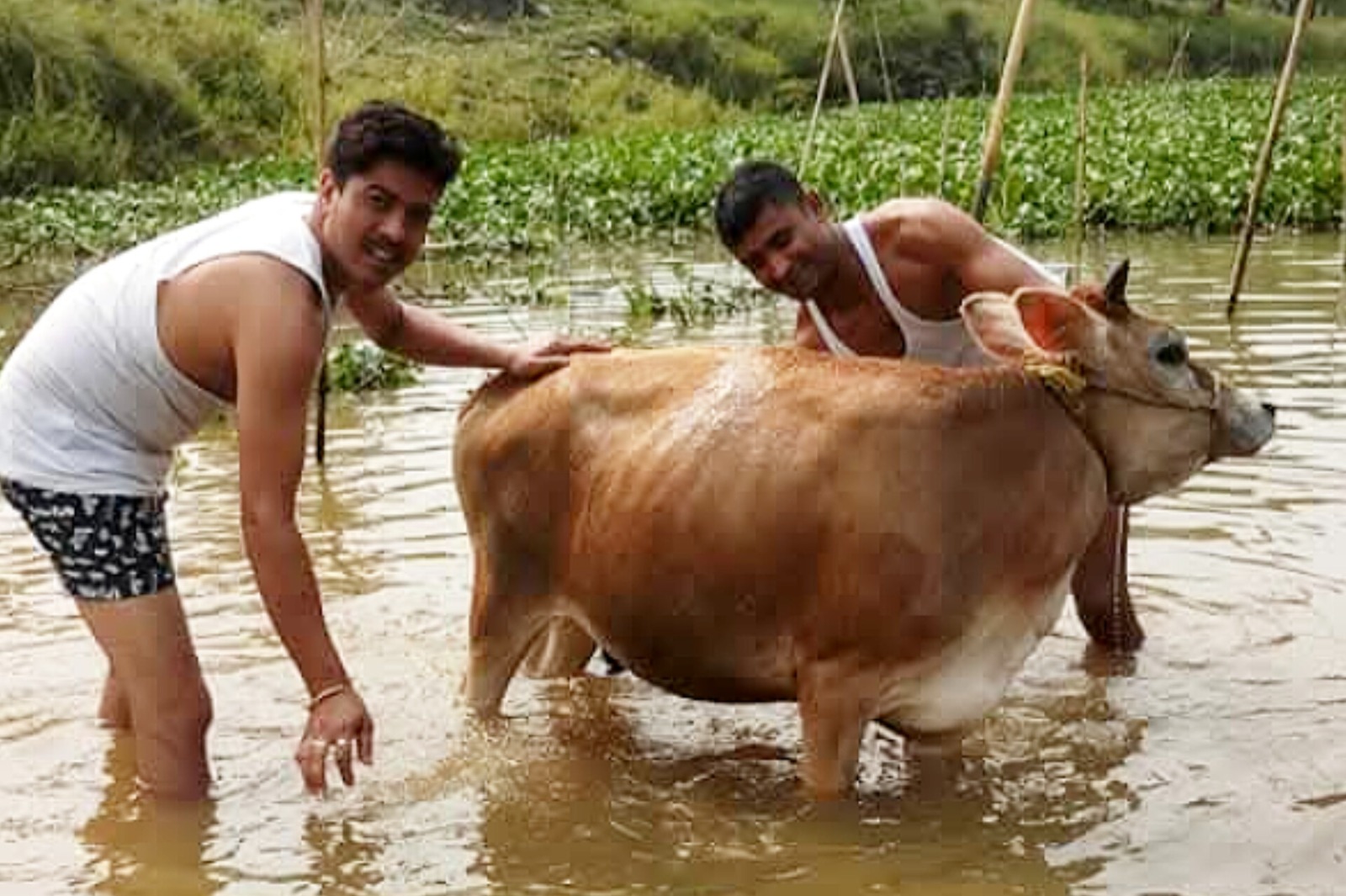
Farmers bathe their cows on the occassion of Goru Bihu.
On the morning of Goru Bihu, cattle are taken to nearby rivers, ponds, or bathing areas and washed thoroughly using water infused with medicinal herbs like maah-halodhi (turmeric paste and black gram). They are then adorned with new harnesses and garlands made of dighloti leaves and flowers.
During the ritual, a traditional song is sung:
“Dighloti dighol paat, maaki maru jopun jaat…”
(This loosely translates to: “Long are the leaves of the dighloti, may the pests and diseases flee.”)
This symbolic bath purifies the cattle and is believed to protect them from disease in the coming year. Later, villagers offer them special treats like rice cakes (pithas) and vegetables.
"These rituals connect us to our roots. We may not all be farmers now, but the reverence for animals remains," says a young woman from Bokakhat, who works in the city but returns home every year for Bihu.
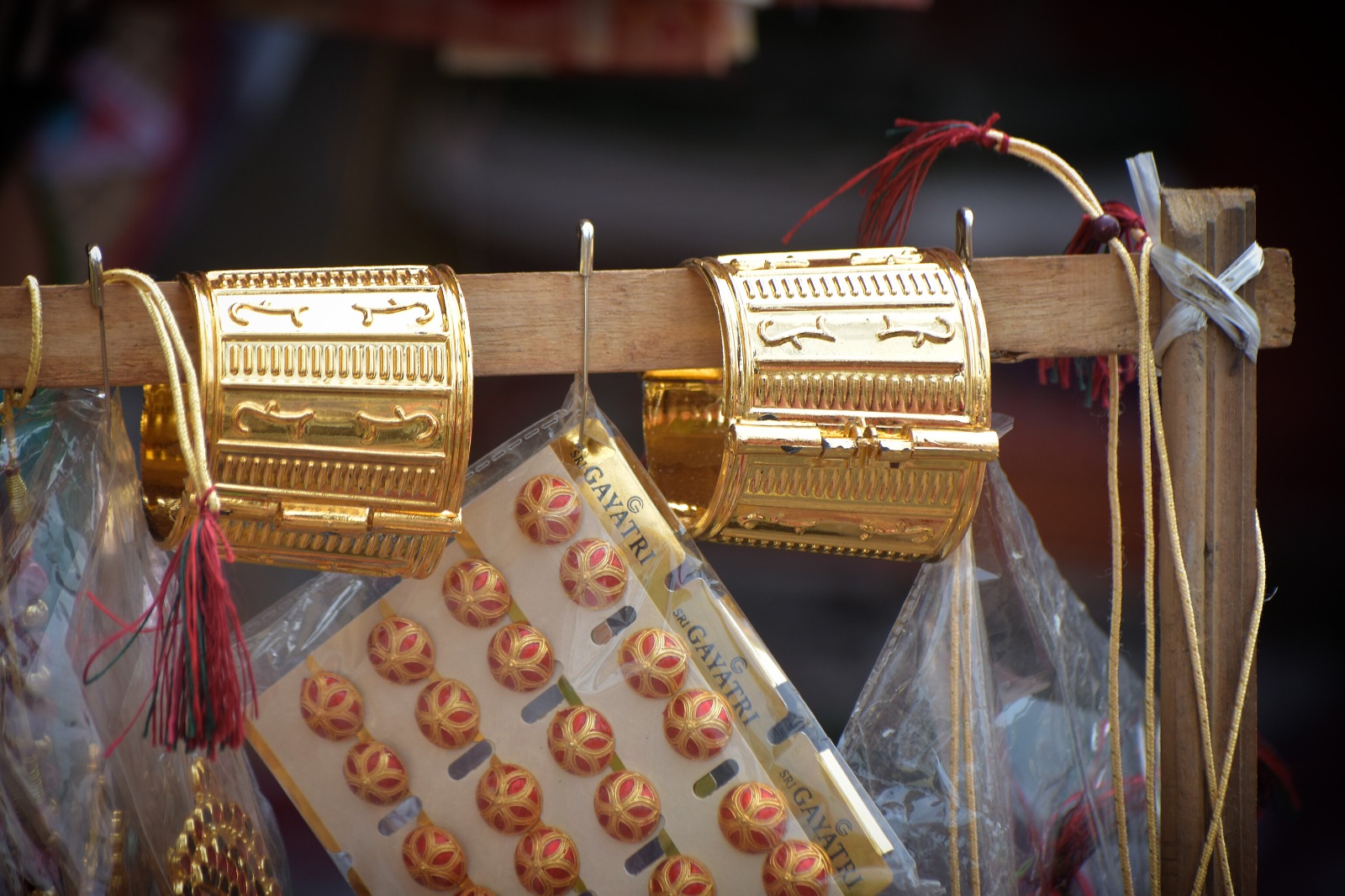
Jewellery sold during Bohag Bihu.
- Manuh Bihu (Human Bihu) – New Year and Respect for Elders
The next day, the first of Bohag, is Manuh Bihu or Manuhar Din, which translates to “day of the people.” On this day, individuals cleanse themselves with ceremonial baths using raw turmeric and black gram paste, don fresh clothes, and begin the New Year with a renewed spirit.
The practice of seeking blessings from elders is central to this day. Younger members of the family touch the feet of elders and offer them gamosas – handwoven towels symbolising respect and love.
Traditional Assamese dishes like laru (sweet coconut balls), pitha (rice cakes), and doi-chira (curd and flattened rice) are prepared in every household. People visit their relatives and neighbours, exchanging gifts and sweets in a gesture of community bonding.
- The Song and Dance of Merriment: The Heartbeat of Bohag
Following the initial days of ritual cleansing and reverence, the atmosphere becomes festive and spontaneous. Open spaces like village courtyards and naamghars (community prayer halls) become hubs of cultural performance.
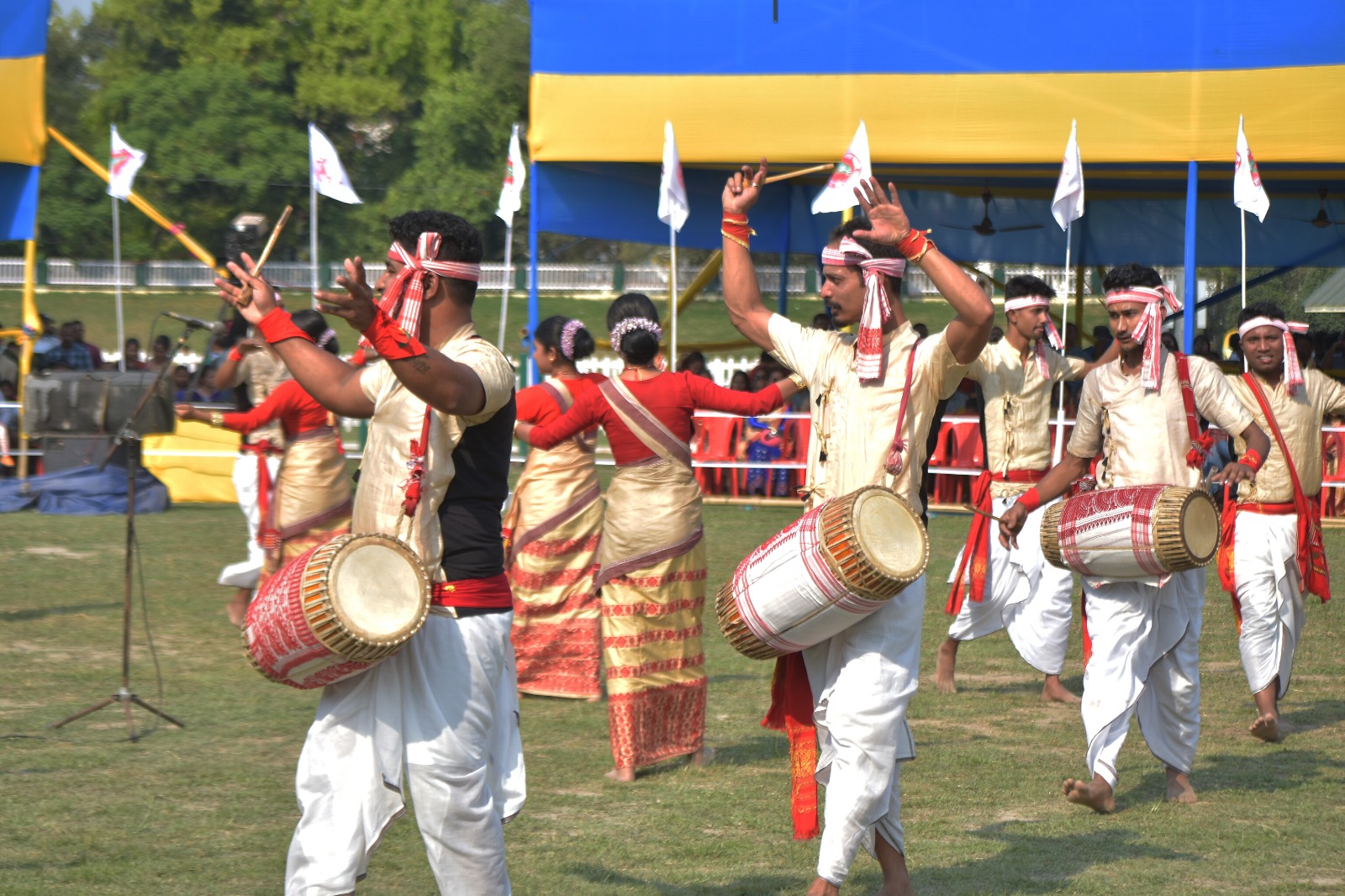
Still from a Bihu workshop held in Guwahati.
Groups of young men and women dress in traditional attire – mekhela sador for women and dhoti-kurta with a gamosa for men – and gather to perform Bihu geet (folk songs) and Bihu nritya (dance).
The dance is characterised by rapid steps, rhythmic hand movements, and playful expressions. Dancers often perform in a circle, accompanied by traditional instruments such as:
- Dhol (drum)
- Pepa (a wind instrument made from buffalo horn)
- Taal (cymbals)
- Gogona (a reed instrument played by the lips)
- Xutuli (a clay instrument)
- Toka (a bamboo instrument)
The songs are lyrical and romantic, often laced with innuendo and nature metaphors.
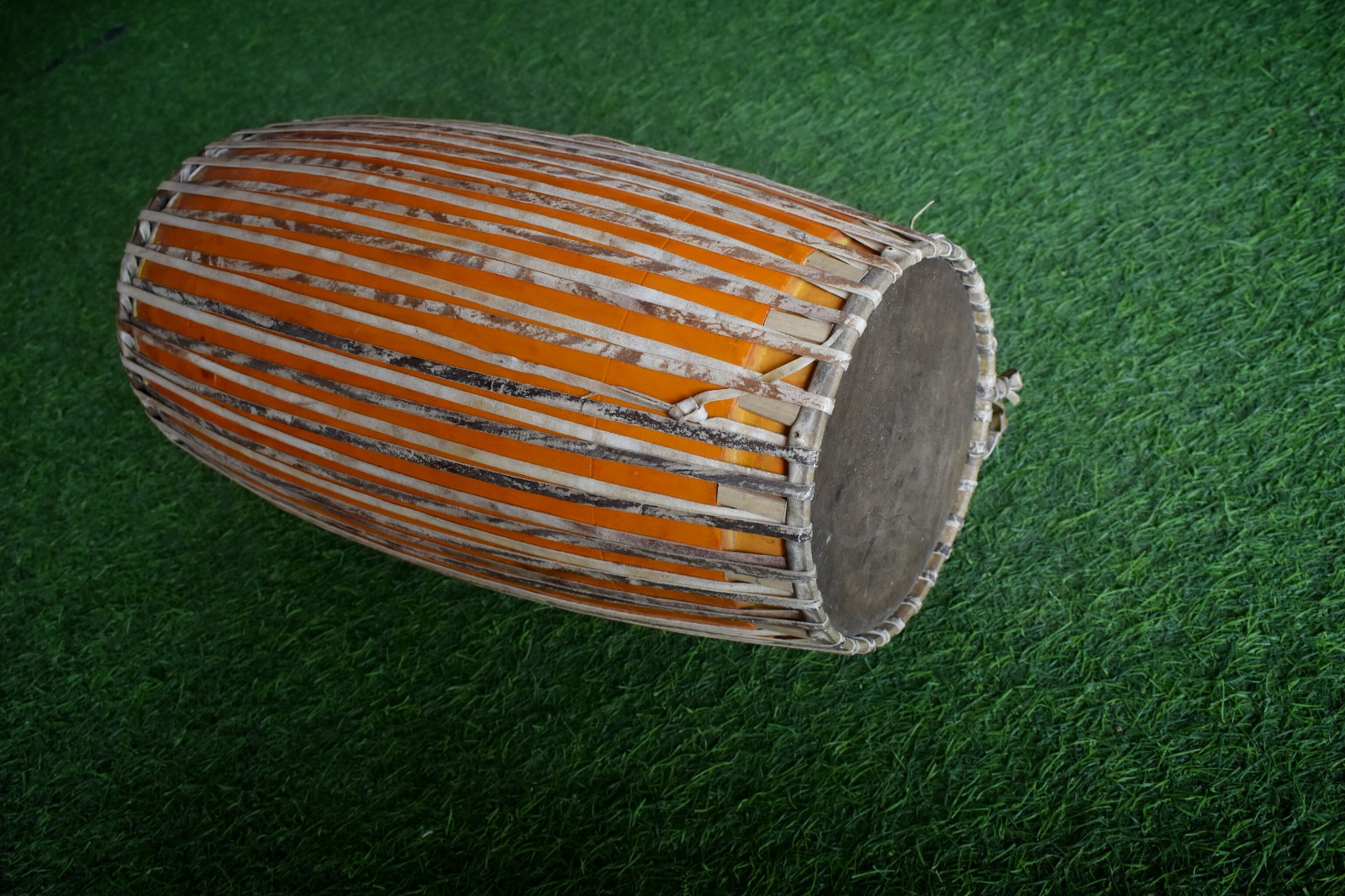
The Dhol, an Assamese instrument played during Bihu.
“The beauty of Bihu songs is how they intertwine love and nature,” remarks a folklore researcher from Jorhat. “The references to blooming flowers, chirping birds, and tender relationships reflect both celebration and courtship.”
- Social Dynamics and the Role of Love
Bohag Bihu is also known for its romantic undertones. The festival offers a culturally sanctioned space for courtship and flirtation. In traditional Assamese society, it was during Bihu that young men and women could freely interact, sing duets, and dance together in public.
Husori – a form of group performance where dancers visit households to offer blessings through songs and are offered gifts in return – often provided these interactions. While this custom is waning in urban areas, it remains alive in many rural pockets.
One anonymous college student from Nalbari confided, “For many of us, it’s more than a festival. It’s an emotion. Some of us even wait all year for Bihu to express feelings that would otherwise go unsaid.”
- The Symbolism of the Bihuwan and Gamosa
An essential part of the festival is the exchange of Bihuwan – a special kind of red-and-white gamosa with woven motifs. The Bihuwan is offered with love and respect, and is often draped around the neck of guests, performers, and elders.
The gamosa symbolises Assamese pride and identity. It is also used in dance performances and has become a powerful emblem during social and political movements in the region.
- Cuisine and Feasts: Flavours of Bohag
No celebration is complete without food, and Bihu is a culinary delight. Preparations begin days in advance, with women in the household coming together to make traditional sweets and snacks.
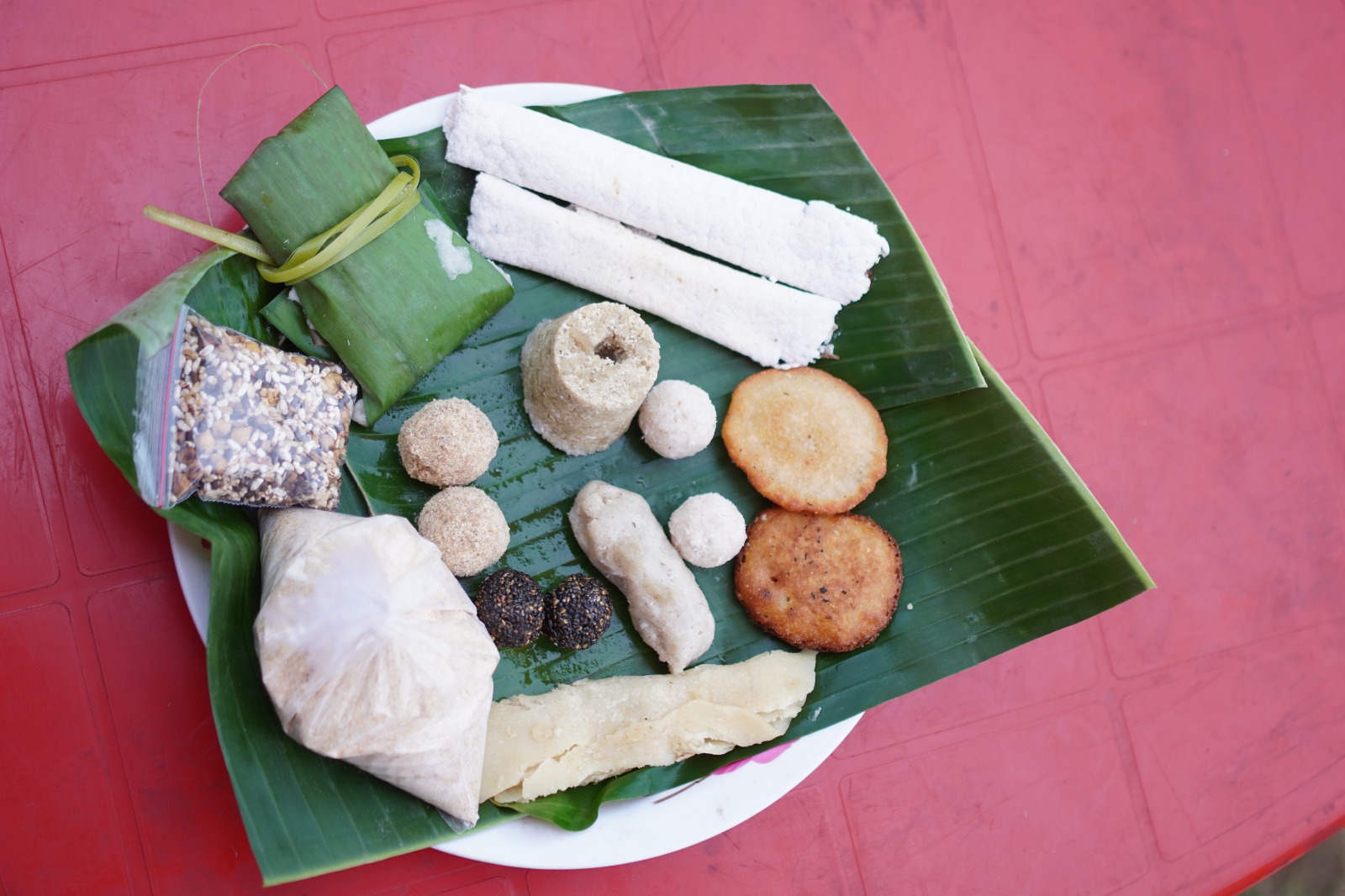
Delicacies prepared during Bohag Bihu.
The star items include:
- Pithas: Varieties like til pitha (with sesame filling), ghila pitha (fried version), and sunga pitha (steamed in bamboo tubes)
- Larus: Made of coconut, jaggery, and sometimes puffed rice
- Curd and flattened rice: Eaten as a light breakfast during Bihu mornings
- Meat dishes: Especially pork and duck curries, in some tribal and ethnic communities
Bihu meals are symbolic of abundance and shared prosperity. “Food is what connects us, regardless of caste or tribe,” noted a homemaker from Dibrugarh.
-Evolving Traditions and Modern Challenges
In contemporary Assam, Bihu has expanded beyond its agrarian roots and rural settings. Cities host mega Bihu functions, often organised by cultural clubs and sponsored by corporates. While this brings visibility, some fear it risks diluting the authenticity of the rituals.
“There is a danger of performance overtaking participation,” says a cultural historian. “The essence of Bihu lies in its spontaneity, its locality – not just grand stage shows.”
Nevertheless, efforts are ongoing to preserve the core traditions. Many schools now organise Bihu workshops, and local TV channels telecast Bihu-themed programmes, keeping younger generations connected to their roots.
- More than a Festival
Bohag Bihu is more than a New Year celebration. It is a living, breathing embodiment of Assamese ethos. Its rituals – from washing cattle to exchanging Bihuwans – transcend mere formality. They represent respect for nature, love for community, and the rhythm of agrarian life.
As one elder in Guwahati poetically summarised, “Bihu is when the earth sings and the people dance in tune. It is the soul of Assam wearing a gamosa and smiling under a blooming tree.”
In a world increasingly disconnected from seasonal cycles and community-based celebrations, Bohag Bihu stands out as a radiant example of harmony, joy, and cultural continuity.



